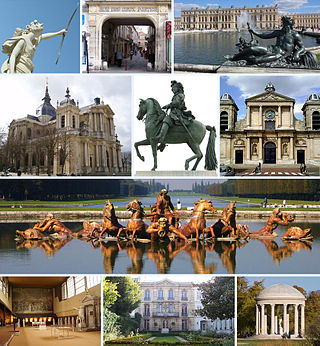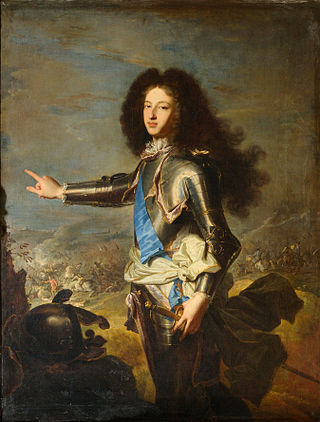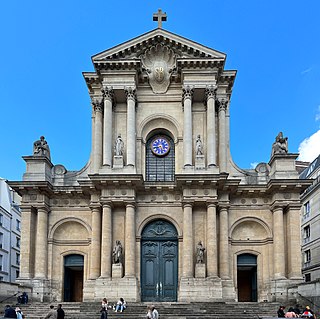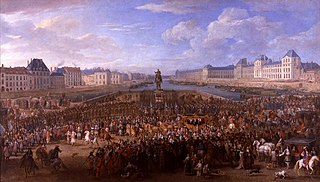History
Claude Trudon
In 1643, a salesman named Claude Trudon arrived in Paris. He soon became the owner of a shop on Saint-Honoré, which provided its customers with wax, candles for any domestic usage as well as church candles to the neighbouring Saint Roch parish. The candles were homemade, developing and building on a specific manufacturing process. On the eve of the reign of Louis XIV, M. Trudon established his first family-owned factory which was to bear his name and make the fortune of his heirs.
Jacques Trudon
Claude's son Jacques took over, becoming a grocer and wax producer and joined the Versailles royal court in 1687 as the apothecary and distiller of Queen Marie-Thérèse.
At the time, wax was under high scrutiny. Carefully collected on the hive, it was bleached through a series of pure water baths that washed off all the impurities. Dried in the open air, the wax was whitened by sunlight. When burning, the flame lit the translucent edges generating the glowing aura of the candle.
Jérôme Trudon
In 1737, Jérôme Trudon, heir of the family, purchased one of the most famous wax producing factories of the times that belonged to Lord Pean de Saint Gilles. Pean de Saint Gilles was then the official wax provider to the King. Drawing from the family expertise, Hierosme devoted his skills to the development of a vast factory. Skilful and very demanding, he produced a wax of very high quality, collecting it from the best hives of the kingdom and trading directly with the producers. The wax was then treated with the utmost attention: it was washed with the purest water after being filtered with gypsum, guaranteeing the highest quality. The factory also imported the finest cotton to manufacture wicks whose combustion was clean and regular. The Trudon candles, so white and so perfect, could burn for hours without crackling; their flame neither trembled nor smoked.
Maison Trudon furnished candles to the royal court, and cathedrals and churches over France. More than one hundred people worked at the time in a very large building – now registered in the French inventory of historical monuments – in the city of Antony, Hauts-de-Seine. Its Latin motto and its blazon are engraved on a stone board of the factory building: a depiction of hives and bees bordered by the saying: Deo regique laborant ("they work for God and for the King" — they meaning the bees).

Louis XIV, also known as Louis the Great or the Sun King, was King of France from 1643 until his death in 1715. His verified reign of 72 years and 110 days is the longest of any sovereign. Although Louis XIV's France was emblematic of the Age of Absolutism in Europe, the King surrounded himself with a variety of significant political, military, and cultural figures, such as Bossuet, Colbert, Louvois, Le Brun, Le Nôtre, Lully, Mazarin, Molière, Racine, Turenne, Condé, and Vauban.

Versailles is a commune in the department of the Yvelines, Île-de-France, renowned worldwide for the Château de Versailles and the gardens of Versailles, designated UNESCO World Heritage Sites. Located in the western suburbs of the French capital, 17.1 km (10.6 mi) from the centre of Paris, Versailles is a wealthy suburb of Paris with a service-based economy and is a major tourist destination. According to the 2017 census, the population of the city is 85,862 inhabitants, down from a peak of 94,145 in 1975.

The Palace of Versailles is a former royal residence commissioned by King Louis XIV located in Versailles, about 19 kilometers (12 mi) west of Paris, France.

Jules Hardouin-Mansart was a French Baroque architect and builder whose major work included the Place des Victoires (1684–1690); Place Vendôme (1690); the domed chapel of Les Invalides (1690), and the Grand Trianon of the Palace of Versailles. His monumental work was designed to glorify the reign of Louis XIV of France.

The Gobelins Manufactory is a historic tapestry factory in Paris, France. It is located at 42 avenue des Gobelins, near Les Gobelins métro station in the 13th arrondissement of Paris. It was originally established on the site as a medieval dyeing business by the family Gobelin.

Charles Antoine Coysevox, was a French sculptor in the Baroque and Louis XIV style, best known for his sculpture decorating the gardens and Palace of Versailles and his portrait busts.

The Château de Marly was a French royal residence located in what is now Marly-le-Roi, the commune on the northern edge of the royal park. This was situated west of the palace and garden complex at Versailles. Marly-le-Roi is the town that developed to serve the château, which was demolished in 1806 after passing into private ownership and being used as a factory. The town is now a bedroom community for Paris.

The Hall of Mirrors is a grand Baroque style gallery and one of the most emblematic rooms in the royal Palace of Versailles near Paris, France. The grandiose ensemble of the hall and its adjoining salons was intended to illustrate the power of the absolutist monarch Louis XIV. Located on the first floor of the palace's central body, it faces west towards the Palace Gardens. The Hall of Mirrors has been the scene of events of great historic significance, including the Proclamation of the German Empire and the signing of the Treaty of Versailles.

Ange-Jacques Gabriel was the principal architect of King Louis XV of France. His major works included the Place de la Concorde, the École Militaire, and the Petit Trianon and opera theater at the Palace of Versailles. His style was a careful balance between French Baroque architecture and French neoclassicism.

Louis, Dauphin of France, Duke of Burgundy, was the eldest son of Louis, Grand Dauphin, and Maria Anna Victoria of Bavaria and grandson of the reigning French king, Louis XIV. He was known as the "Petit Dauphin" to distinguish him from his father. When his father died in April 1711, the Duke of Burgundy became the official Dauphin of France. He never reigned, as he died in 1712 while his grandfather was still on the throne. Upon the death of Louis XIV in 1715, the Duke of Burgundy's third son became Louis XV.

French Baroque architecture, usually called French classicism, was a style of architecture during the reigns of Louis XIII (1610–1643), Louis XIV (1643–1715) and Louis XV (1715–1774). It was preceded by French Renaissance architecture and Mannerism and was followed in the second half of the 18th century by French Neoclassical architecture. The style was originally inspired by the Italian Baroque architecture style, but, particularly under Louis XIV, it gave greater emphasis to regularity, the colossal order of facades, and the use of colonnades and cupolas, to symbolize the power and grandeur of the King. Notable examples of the style include the Grand Trianon of the Palace of Versailles, and the dome of Les Invalides in Paris. In the final years of Louis XIV and the reign of Louis XV, the colossal orders gradually disappeared, the style became lighter and saw the introduction of wrought iron decoration in rocaille designs. The period also saw the introduction of monumental urban squares in Paris and other cities, notably Place Vendôme and the Place de la Concorde. The style profoundly influenced 18th-century secular architecture throughout Europe; the Palace of Versailles and the French formal garden were copied by other courts all over Europe.

The rue Saint-Honoré is a street in the 1st arrondissement of Paris, France.

André Le Nôtre, originally rendered as André Le Nostre, was a French landscape architect and the principal gardener of King Louis XIV of France. He was the landscape architect who designed the gardens of the Palace of Versailles; his work represents the height of the French formal garden style, or jardin à la française.

Alexandre Bontemps was the valet of King Louis XIV and a powerful figure at the court of Versailles, respected and feared for his exceptional access to the King. He was the second of a sequence of five Bontemps to hold the position of Premier valet de la Chambre du Roi in uninterrupted succession between 1643 and 1766, when an early death, leaving no successor, broke the line. There were four head or Premier valets de chambre, of whom Bontemps became the most senior in 1665, and thirty-two valets.

The Church of Saint-Roch is a 17th–18th-century French Baroque and classical style church in Paris, dedicated to Saint Roch. It is located at 284 rue Saint-Honoré, in the 1st arrondissement. The current church was built between 1653 and 1740.

The Church of the Val-de-Grâce is a Roman Catholic church in the 5th arrondissement of Paris. The church was originally proposed as part of a royal abbey by Anne of Austria, the Queen of France, to celebrate the birth of her son, Louis XIV in 1638. It was begun in 1645 by the architect François Mansart, and completed in 1665 by Gabriel Le Duc. The abbey and church were turned into a hospital during the French Revolution. and then became part of the Val-de-Grâce Hospital, which was closed in 1979. The church is attached to the diocese of the French military, and is open to visitors at certain hours. Its dome is a landmark in the skyline of Paris.

Paris in the 17th century was the largest city in Europe, with a population of half a million, matched in size only by London. It was ruled in turn by three monarchs; Henry IV, Louis XIII, and Louis XIV, and saw the building of some of the city's most famous parks and monuments, including the Pont Neuf, the Palais Royal, the newly joined Louvre and Tuileries Palace, the Place des Vosges, and the Luxembourg Garden. It was also a flourishing center of French science and the arts; it saw the founding of the Paris Observatory, the French Academy of Sciences and the first botanical garden in Paris, which also became the first park in Paris open to the public. The first permanent theater opened, the Comédie-Française was founded, and the first French opera and French ballets had their premieres. Paris became the home of the new Royal Academy of Painting and Sculpture, and of some of France's most famous writers, including Pierre Corneille, Jean Racine, La Fontaine and Moliere. Urban innovations for the city included the first street lighting, the first public transport, the first building code, and the first new aqueduct since Roman times.
Events from the year 1665 in France.

The Louis XIV style or Louis Quatorze, also called French classicism, was the style of architecture and decorative arts intended to glorify King Louis XIV and his reign. It featured majesty, harmony and regularity. It became the official style during the reign of Louis XIV (1643–1715), imposed upon artists by the newly established Académie royale de peinture et de sculpture and the Académie royale d'architecture. It had an important influence upon the architecture of other European monarchs, from Frederick the Great of Prussia to Peter the Great of Russia. Major architects of the period included François Mansart, Jules Hardouin Mansart, Robert de Cotte, Pierre Le Muet, Claude Perrault, and Louis Le Vau. Major monuments included the Palace of Versailles, the Grand Trianon at Versailles, and the Church of Les Invalides (1675–1691).


















